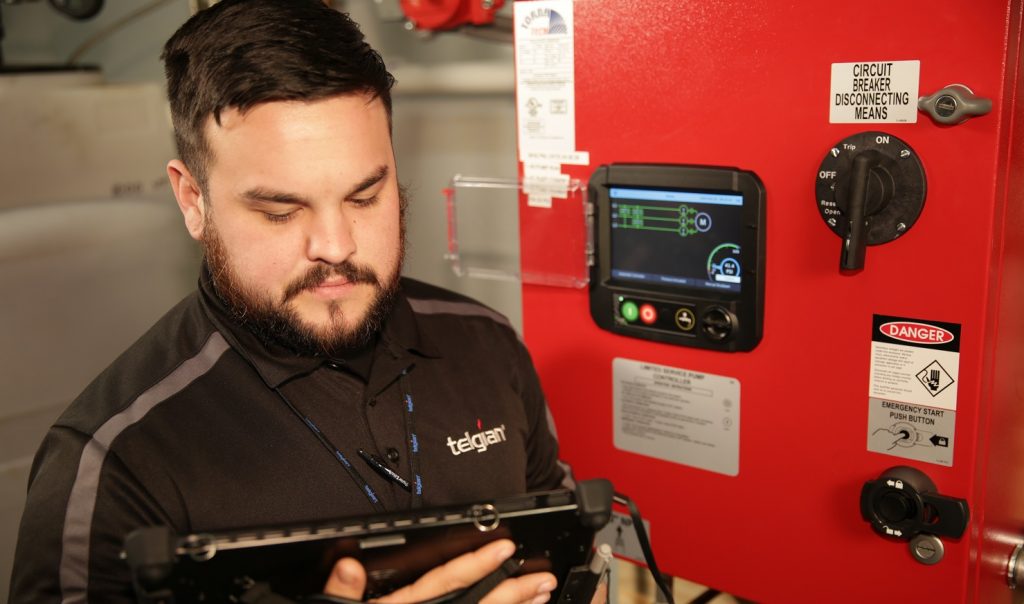Within the fire protection discipline, we have three professional and technical classifications. Understanding fire protection classifications can be difficult and there is often some confusion regarding the role of each. The Fire Protection Engineer, the Certified Technician, and the Certified Fire Protection Specialist each has an important and unique role to play. Each brings a skill set and perspective to fire protection and when this specialized expertise is combined as part of a team, the results are high quality and cost effective solutions to the risks faced in today’s complex business environment.
The Fire Protection Engineer
The National Institute of Building Sciences states that fire protection engineers “use science and technology to protect people and their environment from destructive fire.” By education, training, and experience the fire protection engineer:
- Is familiar with the nature and characteristics of fire and associated products of combustion
- Understands how fires originate, spread within and outside of buildings and structures, and can be detected, controlled, and/or extinguished, and
- Is able to anticipate the behavior of materials, structures, machines, apparatus, and processes as related to the protection of property and life from fire.
Professional engineers are engaged in “performance‐based” design. Engineers are trained to look for solutions for fire challenges that are outside the standard protection criteria prescribed by codes and standards. Fire protection engineers are invaluable in conducting the research,
testing, and problem solving that is inherent in high challenge and high valued risks such as those in the petro‐chemical industry.
Fire protection engineers are trained in the use of computer models for designing fire protection solutions. These models include fire simulation, smoke management, and hydraulic programs. Fire protection engineers also design the performance criteria for full‐scale fire tests that are conducted for the development and application of leading edge technology.
In summary, the professional fire protection engineer analyzes the hazard, determines criteria for controlling and suppressing fires, specifies the system components, and coordinates all of the interaction needed between the building disciplines to have an effective program.
The NICET Certified Technician
While the fire protection engineer specifies the requirements for the design, installation, and maintenance of building and fire protection systems, they typically do not develop the working plans for construction of new systems or modification of existing systems. This is the responsibility of the layout technician. The Society of Professional Engineers (SPE) developed a program over 60 years ago to ensure that the technicians in a variety of disciplines who work under engineers are qualified. The result was the National Institute for the Certification of
Engineering Technicians (NICET). Certification for fire sprinkler layout technicians was introduced in 1980 and in subsequent years expanded to include fire alarm systems, special hazard systems, and the inspection and testing of water based suppression systems. Certified technicians make certain that the engineer’s specified system and protection criteria is translated into working plans that can be used for the procurement and installation of the system. Certified technicians are well versed in installation standards such as those published by the National Fire Protection Association (NFPA), Factory Mutual, and other authorities having jurisdiction.
In addition to NICET certified layout technicians preparing working plans, we have NICET certified inspectors who make sure that systems are kept operational by compliance to standards such as NFPA 25, the Standard for the Inspection, Testing, and Maintenance of Water‐Based Suppression Systems and the property owner’s requirements.
In summation, it is the NICET certified technician who ensures that the system specified by the professional engineer is designed and installed in the most cost effective manner while complying with the requirements of all interested parties such as the facility owner, insurer, and government authorities along with ensuring that the systems are properly maintained after the initial installation.
The Certified Fire Protection Specialist
The Certified Fire Protection Specialist Board was organized in 1971. In 1998, The National Fire Protection Association (NFPA) joined with the CFPS Board to offer and govern this important certification process. While NICET certified technicians focus on the layout, construction, and maintenance of systems, the certified fire protection specialist’s role is directed to the application of fire safety and prevention technologies along with suppression and prevention.
CFPS specialists are experts in the NFPA codes and standards and have the knowledge to examine facilities and determine that the structure itself, systems, and procedures comply with NFPA requirements. CFPS specialists focus on prevention and suppression by demonstrating experience and training covering the broad range of fire disciplines.
Many of the Telgian fire protection engineers and NICET certified technicians are also certified fire protection specialists. CFPS specialists are trained to work with insurers, governmental agencies, and owners’ representatives to deliver systems that are in compliance with NFPA standards while maintaining compliance with the specified design, installation, and maintenance criteria.
As one can see, each of these disciplines has a unique and vital role to play to delivering a comprehensive fire protection program. It is difficult to specify, design, install, and maintain a quality cost effective without the knowledge and experience that the fire protection engineer, the NICET technician, and the certified fire protection specialist brings.
To see a PDF of Understanding Fire Protection Classifications: View article here
Understanding Fire Protection Classifications
About the Author, Russ Leavitt

Leavitt conducts training classes, seminars and webinars both nationally and internationally on a wide variety of fire and life safety related subjects. He has also authored numerous industry articles and training materials including the American Fire Sprinkler Association (AFSA) Beginning Inspector Training Program and the AFSA Online Hydraulics Training Program. As well, Leavitt is a major contributor to several NFPA Handbooks and has served as the subject matter expert for numerous NFPA live and online training programs.
Media and Interview Inquiries:
Susan McNeill Telgian Holdings, Inc.
